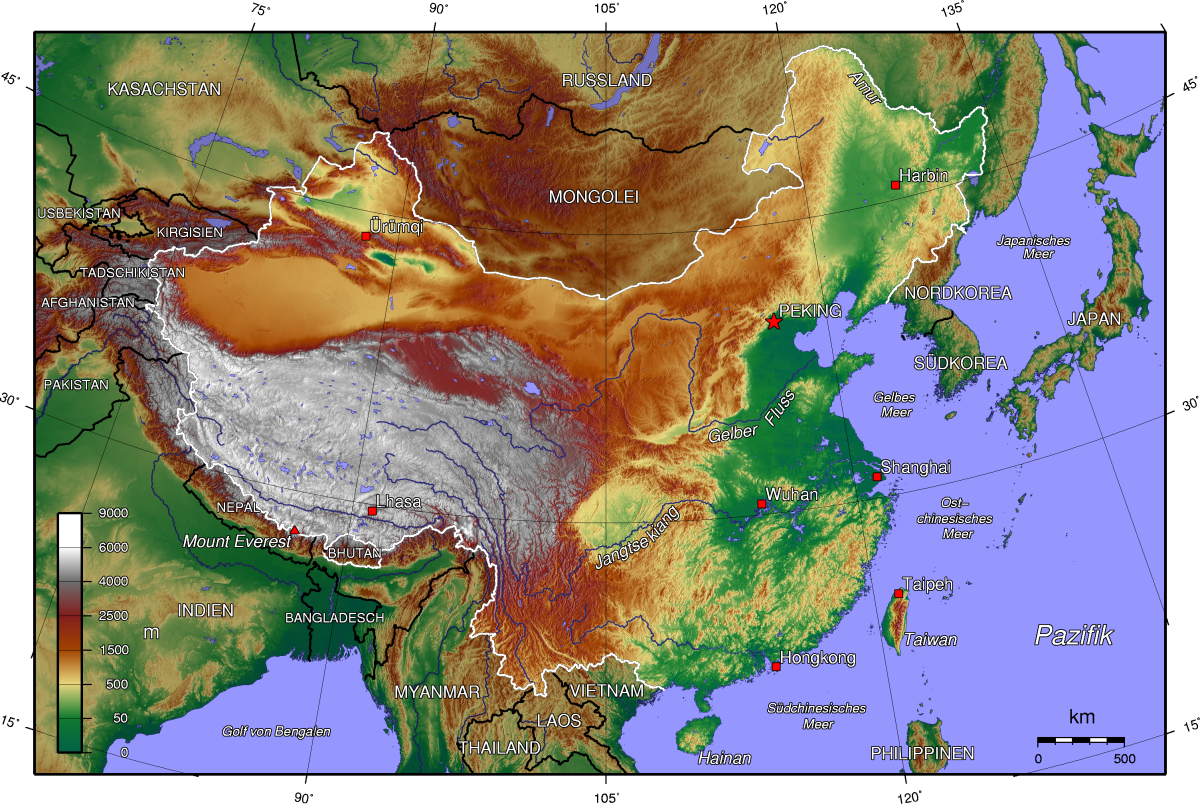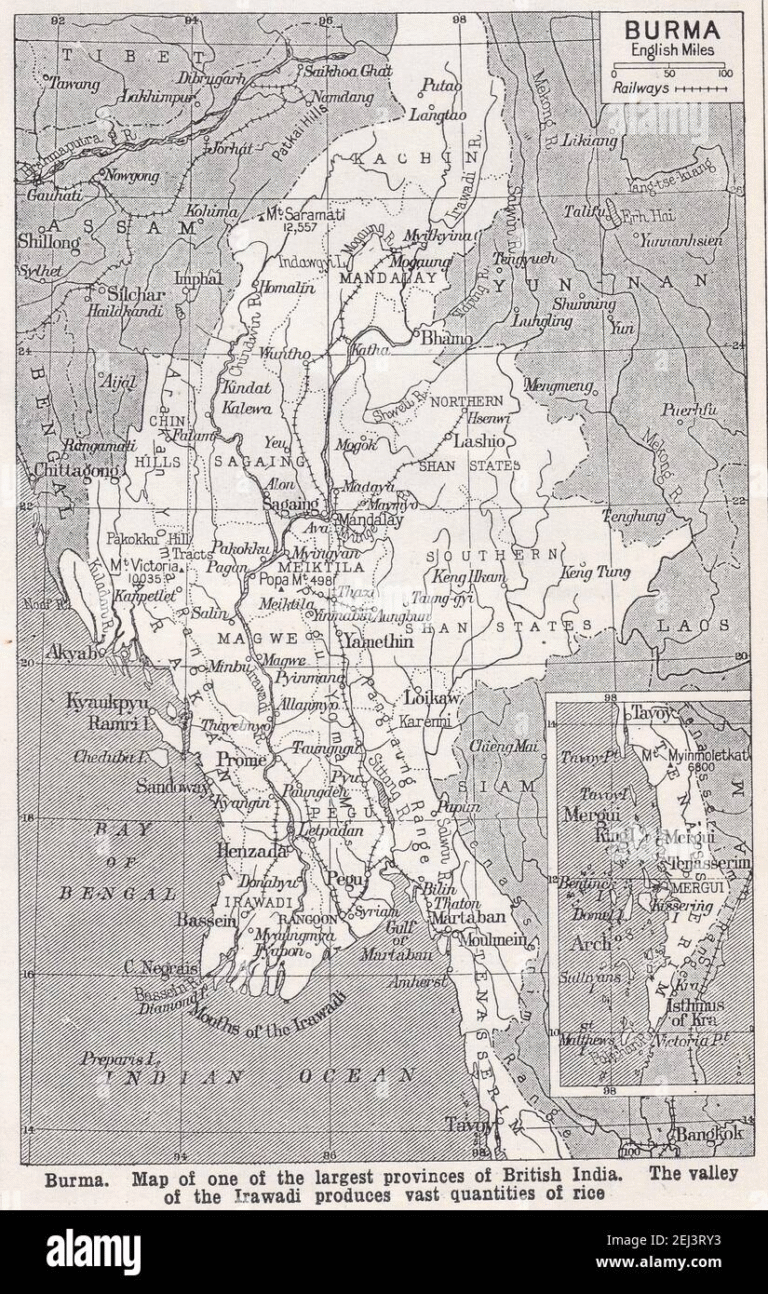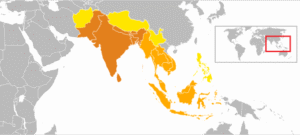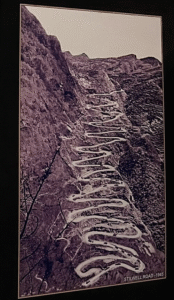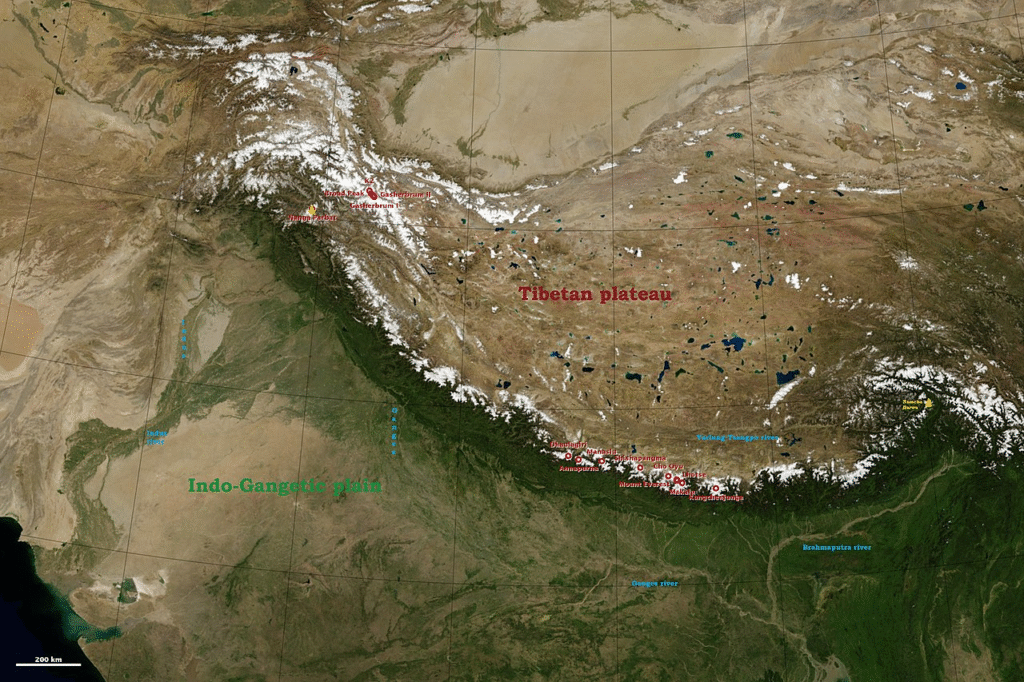
Credit NASA Landsat image – https://eoimages.gsfc.nasa.gov/images/imagerecords/82000/82581/himalaya_map_color_lrg.jpg
Burma: The Living Corridor Between Giants
Nestled between two of the world’s oldest and most populous civilizations—India and China—Myanmar stands as a natural highway of history, where cultures met, mingled, and moved. While the mighty Himalayas rose like a stone wall dividing these two ancient giants, Burma remained open, a lowland gateway shaped by rivers and coastlines. Through this fertile corridor came traders and monks, migrants and refugees, warriors and wanderers—all leaving their mark on the land. Myanmar, far from being a peripheral outpost, became a crossroads of civilizations, where human journeys converged and gave birth to one of Asia’s most diverse societies.
The history of Myanmar is often told through its kings and kingdoms, but the roots of its people reach much further back—across continents, mountain ranges, rivers, and seas. The Myanmar population, with its rich ethnic and cultural diversity, emerged from four major ancestral sources: the original natives, migrants from India, human dispersal Out of Africa, and waves from China, especially Yunnan and Tibet.
Map 1: Ancient Migration Routes Through Burma
Map of Burma-China with river systems flowing from Tibet/Yunnan
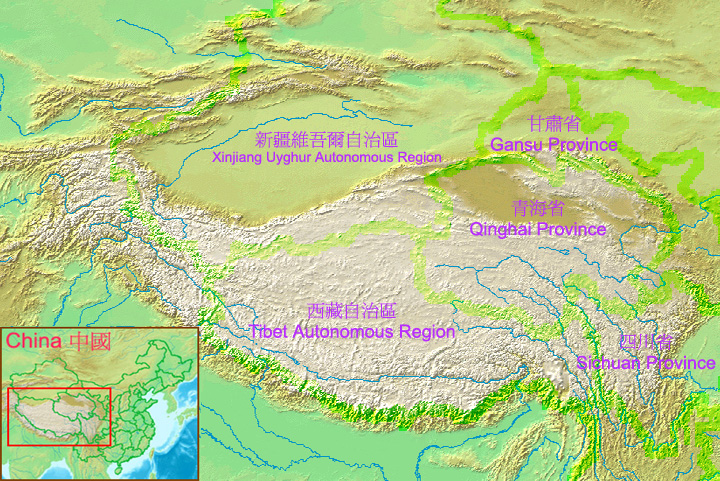
Original uploader was Mak at zh.wikipedia – Transferred from zh.wikipedia; transferred to Commons by User:Shizhao using CommonsHelper.
Caption: “Rivers from the Tibetan Plateau formed natural highways for early human migration into Burma.”
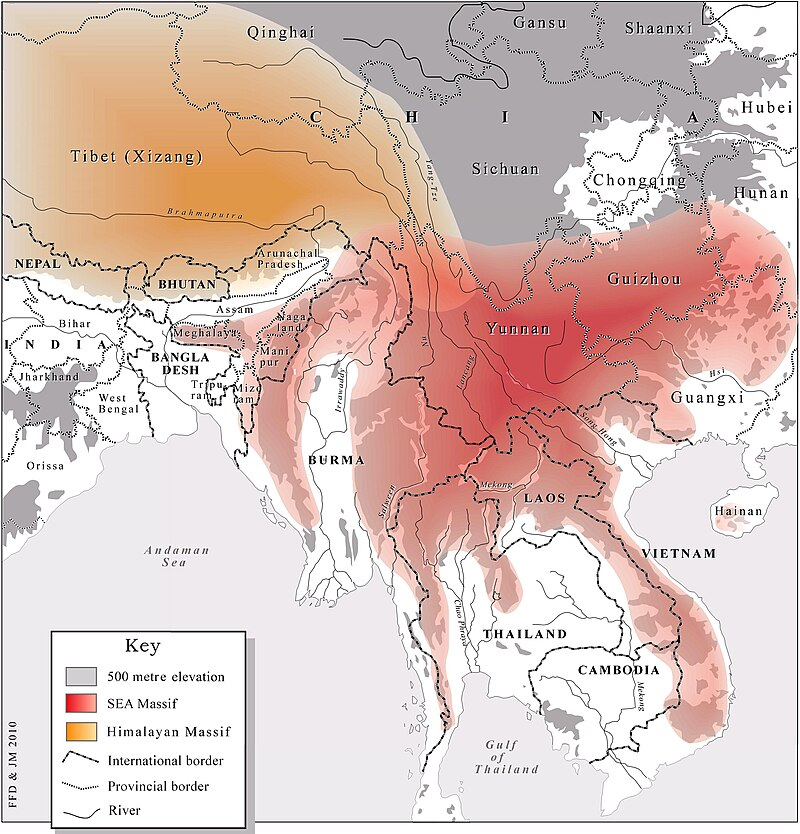
Wikipedia By Jean Michaud – Journal of Global History, Public Domain, https://commons.wikimedia.org/w/index.php?curid=15844345
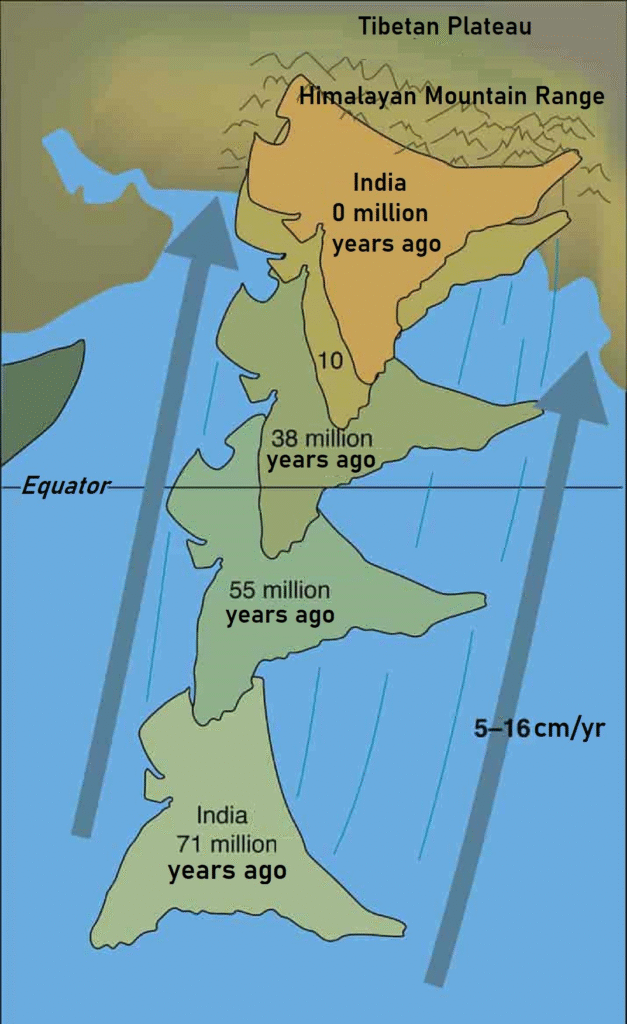
Indian Plate Collision with Eurasian Plate
“The mighty Himalayas were born when the Indian plate slammed into the Eurasian landmass—but Burma remained an open passage.”
By Haakon Fossen (captions translated into English by Fowler&fowler (talk) 14:27, 15 February 2025 (UTC)) – https://snl.no/platetektonikk, CC BY 3.0, https://commons.wikimedia.org/w/index.php?curid=159722350
The movement of the Indian plate toward the Eurasian plate starting 71 million years ago at the average speed of 5–15 centimetres (2.0–5.9 in) per year, which closed the Neo-Tethys Ocean above and opened the Indian Ocean below.
Ancient Migration Routes Through Burma
Map of Burma-China with river systems flowing from Tibet/Yunnan
“Rivers from the Tibetan Plateau formed natural highways for early human migration into Burma.”
Below Map: Wikipedia
| Dubaduba~commonswiki (talk | contribs) | from de.wikipedia.org Category:Maps_of_China |
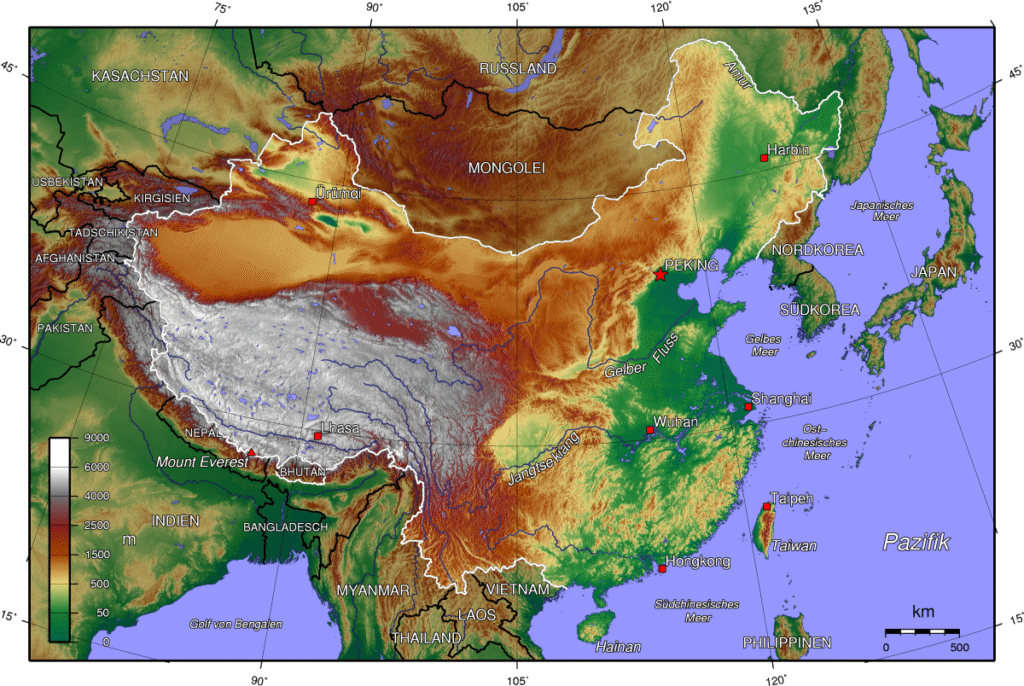
1. Original Natives – From the Stone Age to Settled Society
Archaeological evidence confirms that humans lived in the Irrawaddy valley as early as 750,000 years ago. The Anyathians, early Homo erectus or Homo sapiens, left stone tools near the Ayeyarwady River. By 11,000 years ago, Upper Paleolithic humans occupied the Badahlin Caves in southern Shan State.
The Neolithic era (7000–2000 BCE) brought agriculture, pottery, and settled village life across central and southern Burma, especially near the Chindwin and Irrawaddy rivers. By 2500 BCE, bronze tools were in use, and ironworking began around 1500 BCE. Large-scale irrigation and canal construction in the first centuries CE helped consolidate city-states, such as Prome (Pyay), laying the foundation for the later kingdoms.
2. From India – A Gateway of Civilization, Trade, and Religion
Burma’s ancient history is deeply intertwined with that of India, through both migration and influence. As early as 500 BCE, Buddhist colonists from Orissa reached the Irrawaddy Delta and built pagodas. Later waves of Hindu settlers, including Telugu-speaking peoples around 180 BCE, established early cities like Hanthawaddy (Bago) and Syriam (Thanlyin).
The Chola Empire of South India, under Rajendra Chola I, launched a great naval campaign in the 11th century that extended into Burma, Sumatra, and Malaya, strengthening South Indian connections. Indian Dravidian tribes were noted to have settled near the Gulf of Martaban, particularly in Beikthano, one of the earliest city-states in Myanmar.
Burmese mythology itself speaks of Abhiraja, an exiled Indian prince who founded the Tagaung dynasty—a legend that traces the origin of Burmese royalty to Indian Janapadas (city-states). By the 2nd century CE, Burmese traders were sailing to southern India, and Theravāda Buddhism began to take root in the Irrawaddy valley, replacing earlier animist and Hindu beliefs.
3. Out of Africa – The Universal Human Journey
All human populations trace their distant origin to Africa. The “Out of Africa” migration of Homo sapiens began around 70,000 years ago, as small bands moved into the Middle East, then to South Asia, Southeast Asia, and eventually to Myanmar.
Genetic and archaeological data show that Homo sapiens had reached Australia, Asia, and Europe by around 40,000 years ago. These first humans likely lived in caves, hunted wild game, and gradually adapted to Myanmar’s tropical river valleys. Their DNA forms the deepest layer of ancestry in all Myanmar ethnic groups.
Even earlier, Homo erectus—another ancestor—had migrated out of Africa over 1.9 million years ago, reaching Southeast Asia and possibly influencing early regional hominins like the Java Man.
4. From China – The Great Highland Migrations of Yunnan and Tibet
Myanmar also shares deep historical and genetic ties with Southwestern China, especially Yunnan and Tibet.
In Yunnan, human presence dates back to Yuanmou Man, the earliest known hominid fossil in China. Neolithic communities around Lake Dian used stone tools and built wooden dwellings. By 109 BCE, the Han Dynasty had annexed Yunnan and set up commanderies to increase trade with India and Burma. Some anthropologists link early Yunnan peoples with the ancestors of the Tai and Shan ethnic groups.
The Mongol Empire under Kublai Khan invaded Yunnan in 1253, ending the Dali Kingdom and incorporating Yunnan into the Yuan Dynasty. Kublai appointed Sayyid Ajjal Shams al-Din Omar, a Turkic Muslim, as governor of Yunnan in 1273—a fascinating example of multicultural governance at the Burmese border. These events likely influenced the Shan States and upper Burmese polities.
To the northwest, Tibet shares linguistic and ancestral ties with Myanmar’s Tibeto-Burman peoples. Tibetan Plateau populations date back over 21,000 years, with waves of Neolithic settlers arriving around 3000 years ago from northern China. The Tibetan language, like Burmese, belongs to the Tibeto-Burman family. Ancient trade routes and shared highland ecology brought cultural exchange between Tibet and upper Burma.
Conclusion: A Mosaic of Migrations and Memories
The people of Myanmar are not the product of a single migration or race, but rather the result of thousands of years of human movement, trade, warfare, and cultural exchange. From the first prehistoric hunters along the Ayeyarwady, to Indian monks bringing Buddhism, to Chinese highland migrations—Myanmar’s peoples have always stood at a crossroads of civilizations.
Understanding this rich and complex origin story can help foster a more inclusive national identity—one that values every layer of Myanmar’s human heritage, from the caves of Badahlin to the hills of Yunnan and beyond.
